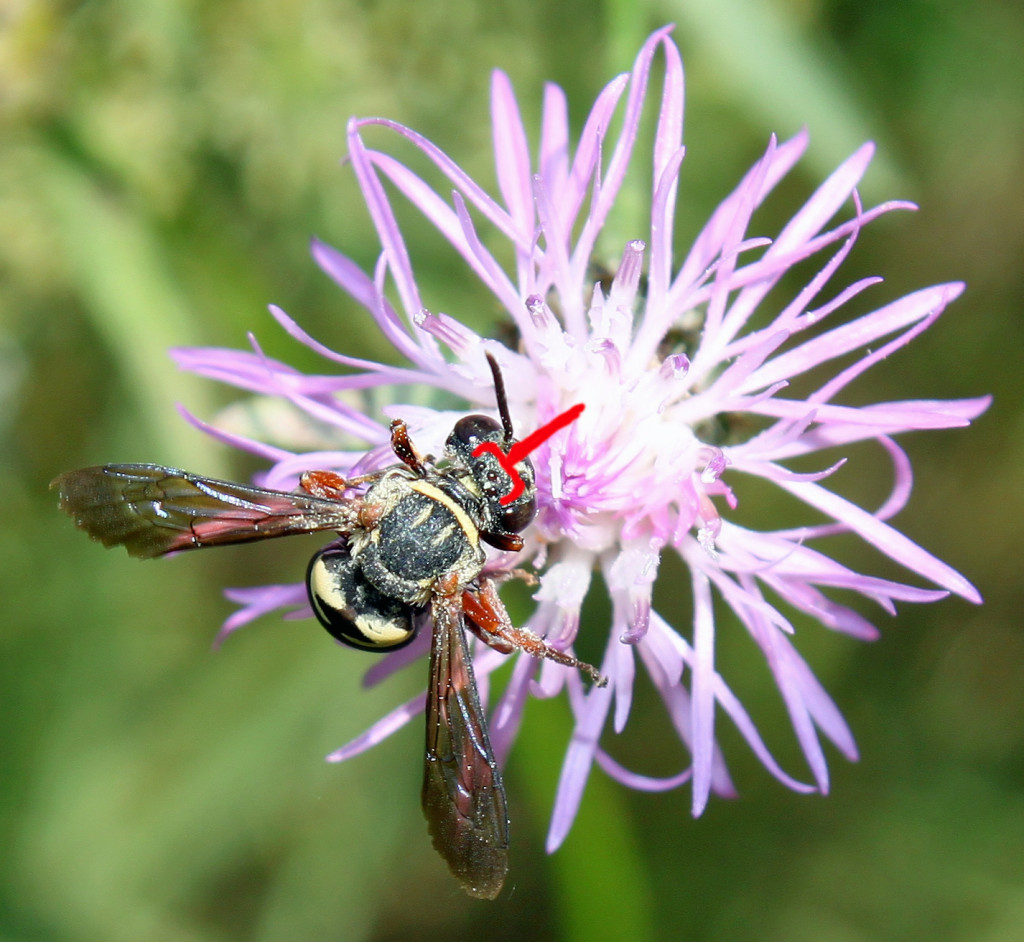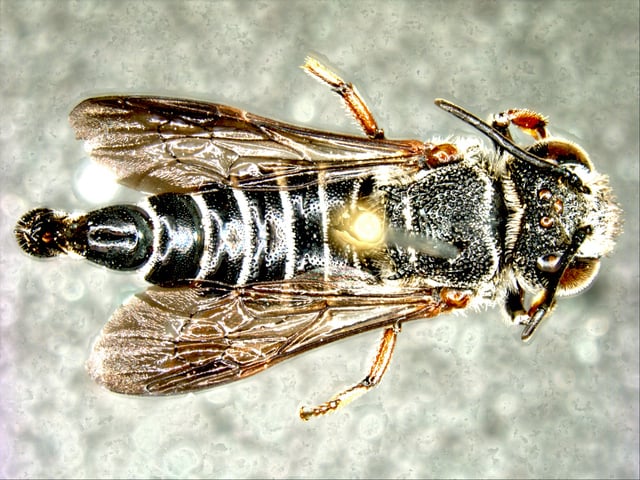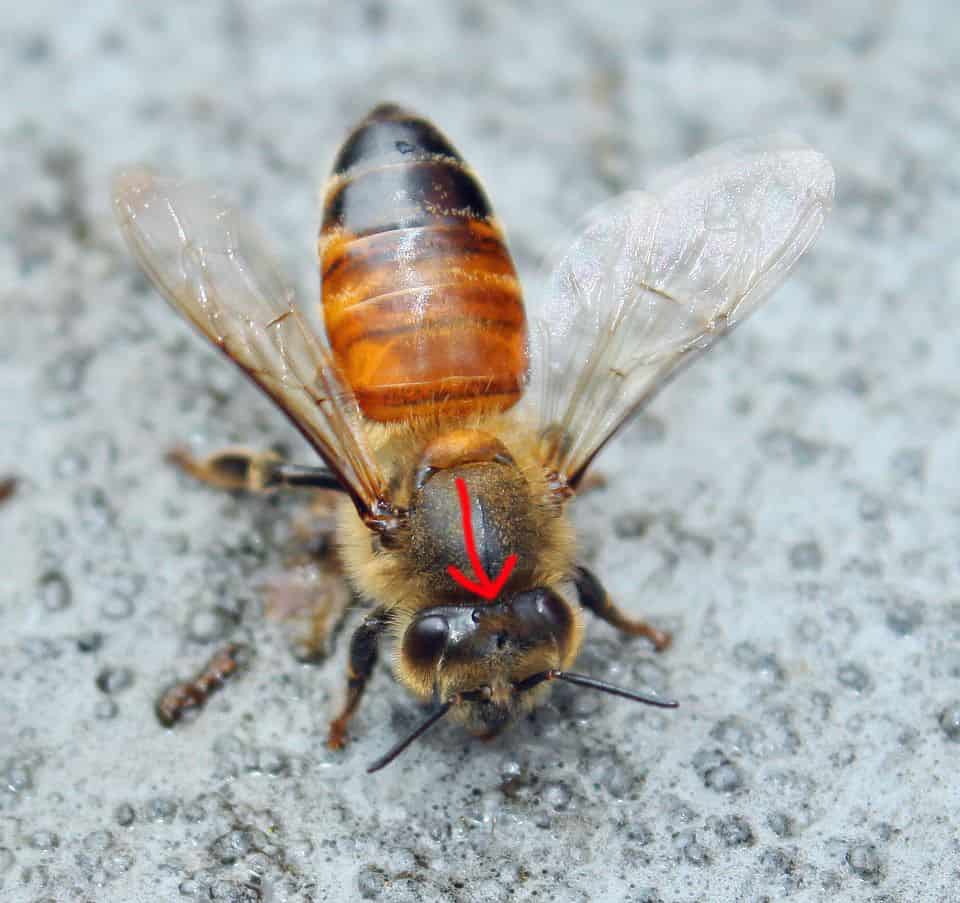
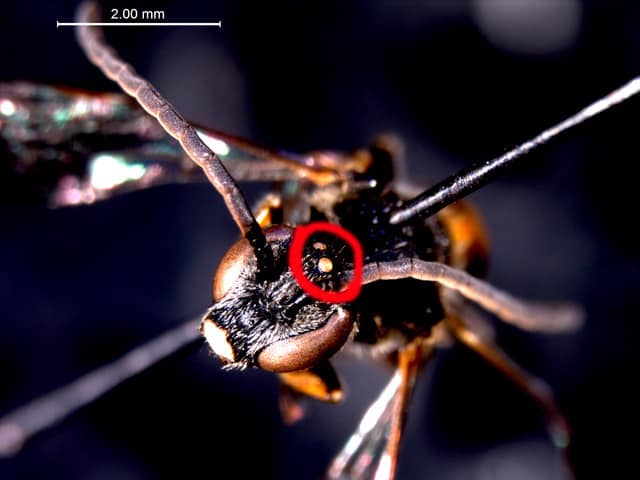
The word ocelli is derived from the Latin word ocellus and means little eye. The ocelli are simple eyes that bees use to orientate themselves towards the sun. Located in a triangular shape are two dorsal ocelli and one central ocelli. They are located dorsally on the bees head (see images above for location).
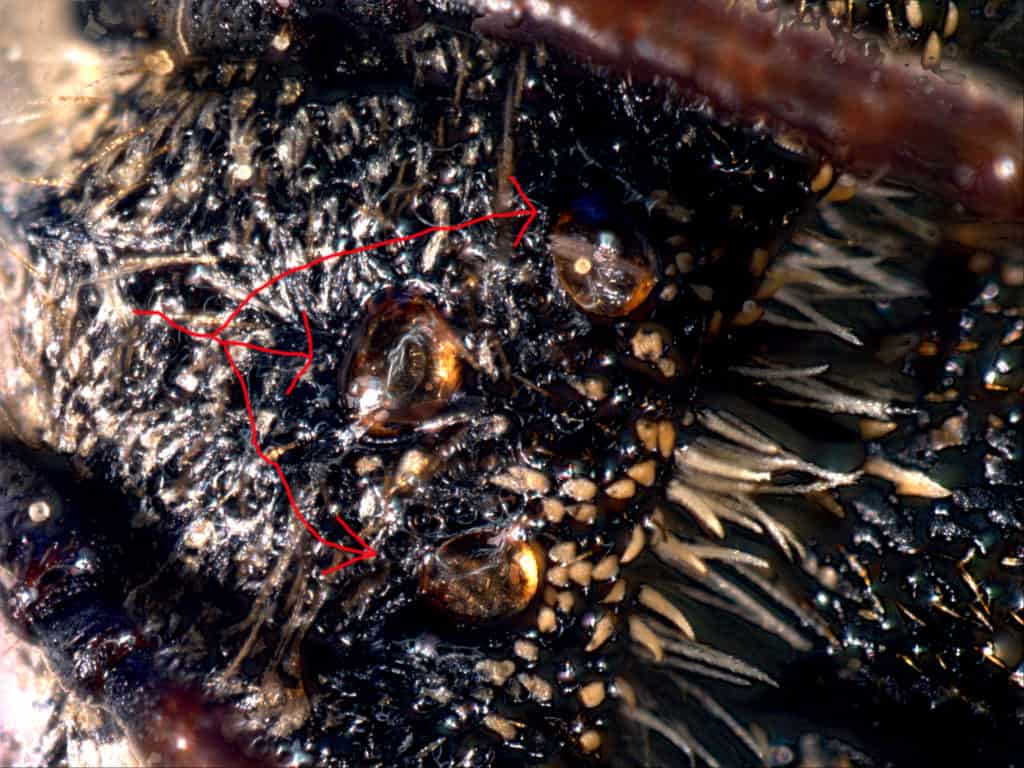
The ocelli are simple eyes, meaning they collect and focus light through a single lens. These simple eyes assist bees with sun orientation so they can navigate well during the day. Some bee species are crepuscular meaning they are active from dusk until dawn. These species have enlarged ocelli which detect minute differences in light and assist in navigation in the dark. One example of this would be a bee living in the desert. With extreme day temperatures it may only be practical for the bee to forage at night. A second example would be pollination of evening primroses which occurs at night by bees or Lepidoptera (Butterfly’s, Moth’s and Skipper’s).

Bees also have compound eyes which are the noticeable eyes on the bees head (see image above.) Compound eyes contain multiple lenses or facets which focus light onto retinula cells to perceive an image. These two groups of eyes together allow the bee to navigate by sunlight and with landmarks and add to the information from pheromone markers left by bees. I have included some other images I have of insects showing off their ocelli below.

